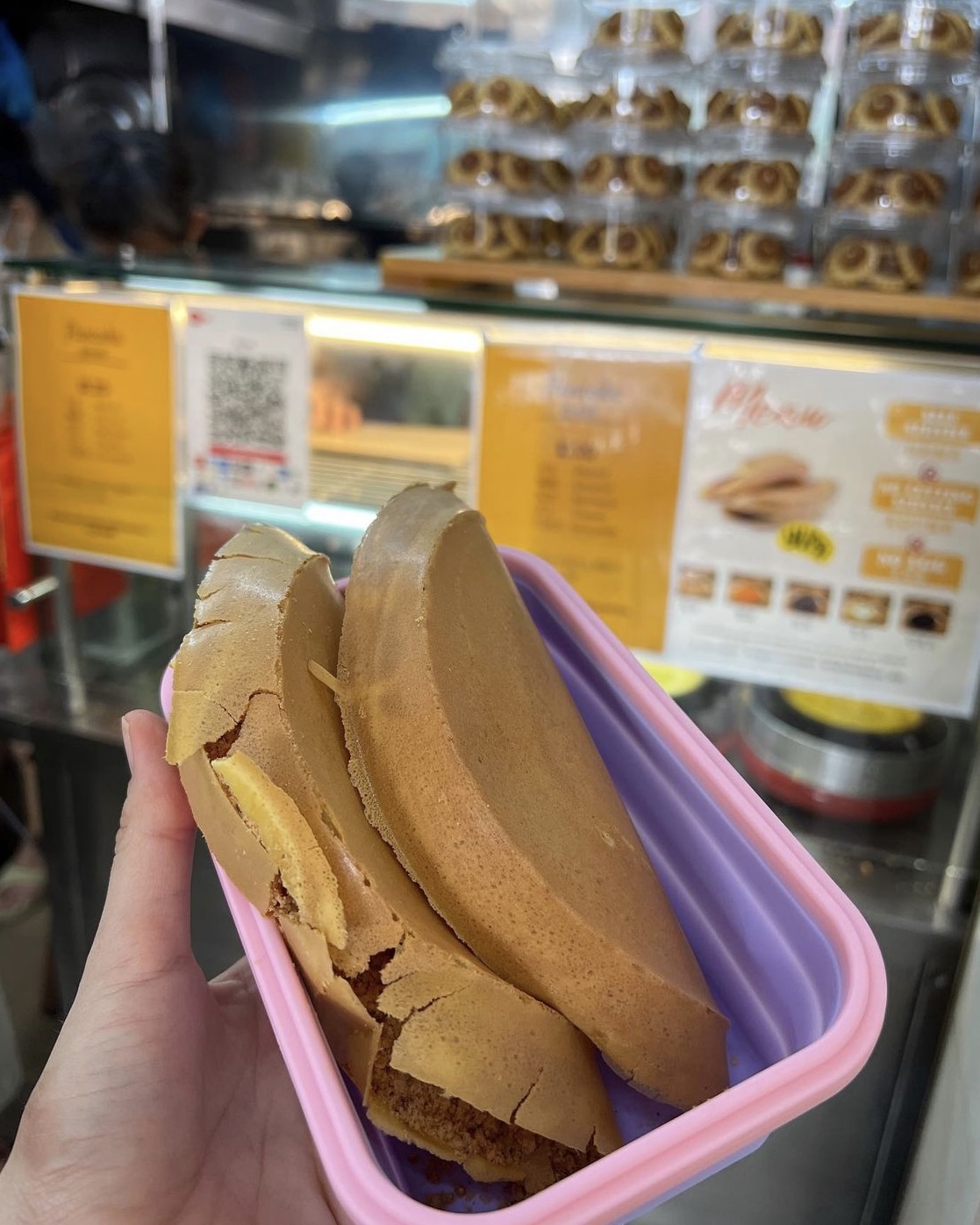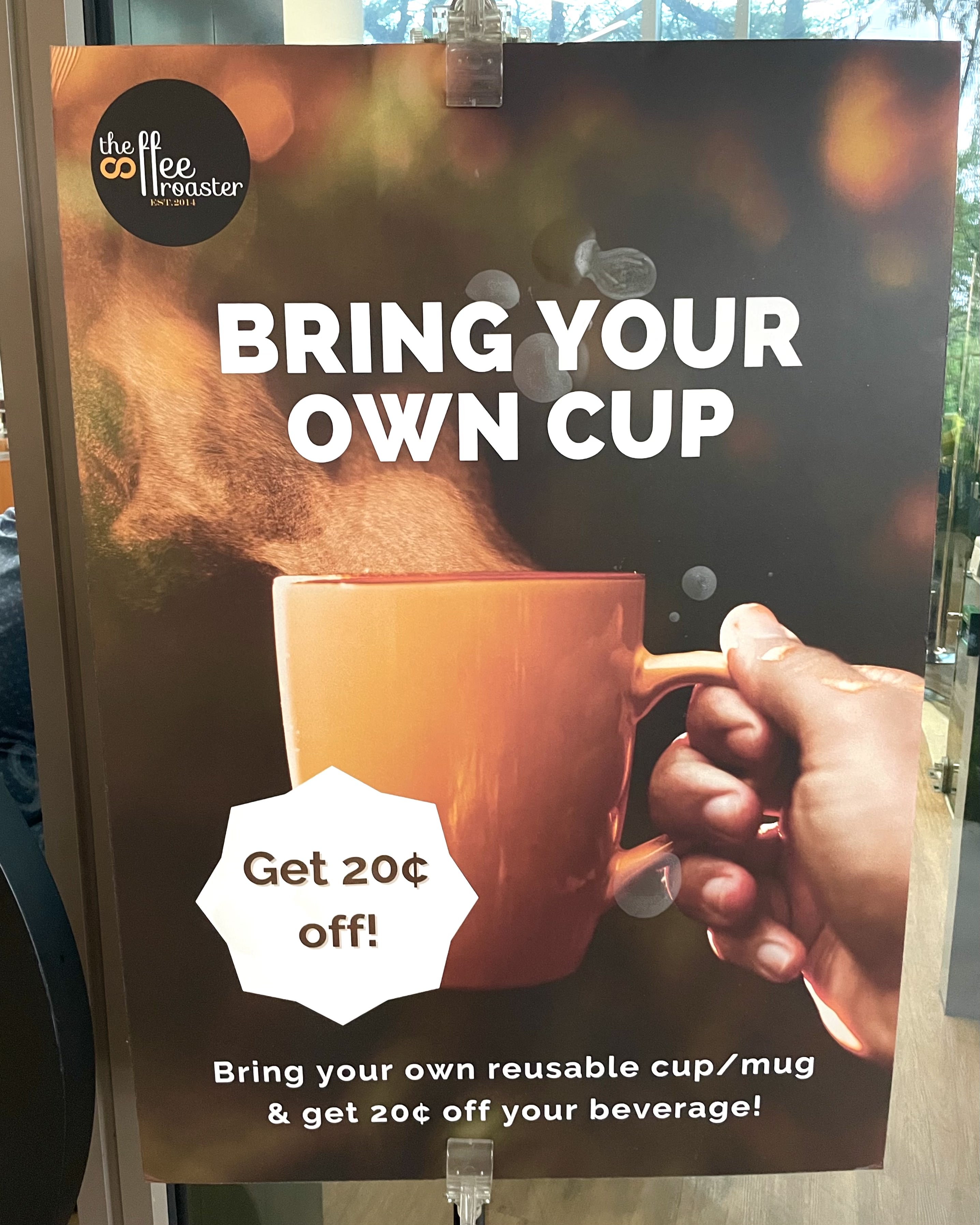The Low-Down on Low-Waste Takeaway
Want to reduce your wastage when doing takeaway, but not sure where to start? GWENNETH TEO finds out what beginners should know about using reusable takeaway containers.
BY
Gwenneth Teo
Editorial Admin Manager
Hype Issue #56
Published on
January 27, 2023
As we usher in a new year, part of your new year’s resolution might be to cut down on the waste that you generate.
But in a food paradise like Singapore, where there is a wide variety of food, it might be easier said than done. Many who opt to take away their food simply use the disposable containers and packaging provided by Food and Beverage (F&B) establishments. As such, it should be no surprise that single-use plastic disposables make up an estimated 30 to 70 percent of plastic waste in Singapore. Given that an astonishing 924 thousand metric tonnes (or the weight of 64 double-decker buses) of incinerated plastic waste went to Semakau Landfill in 2021, it’s long overdue that we examine our own usage habits of single-use disposables.
It may feel daunting to think about where to start, but it’s as simple as opening the doors of your kitchen cabinets and examining what you already have. This is a good way of easing into the habit of using different reusables, as it is cost-free and there is no pressure to continue using a certain type of container if it does not work for you.
“I don’t encourage buying [reusable containers] unless it’s necessary or meaningful. You need to find what works for you because if you start using unsuitable items, it will only frustrate you and make it less likely that you’ll continue the habit.” says Ms Melissa Lam, a sustainability advocate and environmental consultant. Ms Lam is also the owner of eco-lifestyle store Bamboo Straw Girl, the very first zero-waste lifestyle store in Singapore.

Take a look at what containers you have at home. Chances are you already have the containers you need to get started. Photo by Gwenneth Teo.
From there, you can take note of your takeaway habits, such as the type and temperature of the food you buy most often, and purchase reusable containers that can store them if you don’t already own such a container. That way, you can invest in reusables wisely and guarantee that they will be used.
What are the basics you can start with? Again, it all comes down to your food preferences and lifestyle. For Ms Jasmyn, a foodie who documents what she eats on her Instagram page @crazeforlesswaste, her beginners’ pack includes a reusable bag, cup, and straw.

Ms Jasmyn uses reusables for a wide variety of food, from min jiang kueh to fish soup. Image from @crazeforlesswaste on Instagram.
If you have limited space in your bag, consider using collapsible containers, or simply start small with a cutlery set. If you’re unable to wash the cutlery right after finishing your meal, store them in a reusable bag such as a ziploc bag or pouch and wash them when you can.
While using reusable containers is a great practice, Ms Lam emphasises that it is more important to reduce where you can. This means thinking twice before investing in shiny new containers if you’re not going to use them long-term. A “Reusable” might be a plastic container you were given when you did takeaway in the past. As long as those plastic containers are sturdy, feel free to reuse them when you do takeaway in the future.
Ms Lam recommends this thought process when making purchasing or consumption decisions: Refuse, reuse, rethink.
- Refuse: Is it really necessary?
- Reduce: If I must have it, how much of it do I need?
- Rethink: Think, and think again, about whether this choice is the best one.
As you start out on your journey to reduce waste, motivate yourself to keep up the habit of using reusable containers consistently, especially when disposables provided by food establishments seem oh-so-convenient. Ms Lam believes that a change in mindset can help ensure that you can maintain the habit of using reusables.
“Especially with recent media shining light on this issue, the average person will be able to understand that the environmental impact of disposables outweighs their personal convenience,” Ms Lam says.
The Bring-Your-Own (BYO) movement was started by Zero Waste SG in 2017 and aims to encourage Singaporeans to cut down on single-use plastic usage. Many F&B outlets have partnered with the BYO campaign to offer incentives, usually in the form of savings and discounts, for customers who bring their own containers. You can find the full list of participating F&B outlets here.

Many cafes such as The Coffee Roaster offer discounts if patrons bring their own cups and containers to purchase food. Incentives include a 10 percent discount or a 10 to 50 cent deduction from the total bill. Photo by Gwenneth Teo.
Another benefit of converting to reusables is that you’ll be supporting local hawkers. According to BYO, as hawkers use fewer disposables, they would be saving on costs otherwise incurred by purchasing disposable cutlery and containers. Why not kill two birds with one stone?
As you begin on your journey to reduce waste, Ms Jasmyn offers some sage advice: “A little goes a long way for sure. Don’t think about doing it perfectly, just take little steps and do what you can!”

I may need your help. I tried many ways but couldn’t solve it, but after reading your article, I think you have a way to help me. I’m looking forward for your reply. Thanks.
jazz cafe
Thanks for sharing. I read many of your blog posts, cool, your blog is very good. https://accounts.binance.com/el/register-person?ref=T7KCZASX
cafe jazz
Thanks for sharing. I read many of your blog posts, cool, your blog is very good.
Can you be more specific about the content of your article? After reading it, I still have some doubts. Hope you can help me.
Thank you for your sharing. I am worried that I lack creative ideas. It is your article that makes me full of hope. Thank you. But, I have a question, can you help me?
… [Trackback]
[…] Read More here on that Topic: hypesingapore.com/index.php/2023/01/27/the-low-down-on-low-waste-takeaway/ […]
… [Trackback]
[…] There you will find 88279 additional Information to that Topic: hypesingapore.com/index.php/2023/01/27/the-low-down-on-low-waste-takeaway/ […]
… [Trackback]
[…] Find More on to that Topic: hypesingapore.com/index.php/2023/01/27/the-low-down-on-low-waste-takeaway/ […]
… [Trackback]
[…] There you can find 74238 additional Information on that Topic: hypesingapore.com/index.php/2023/01/27/the-low-down-on-low-waste-takeaway/ […]
… [Trackback]
[…] Read More Information here on that Topic: hypesingapore.com/index.php/2023/01/27/the-low-down-on-low-waste-takeaway/ […]
… [Trackback]
[…] Find More Info here to that Topic: hypesingapore.com/index.php/2023/01/27/the-low-down-on-low-waste-takeaway/ […]
… [Trackback]
[…] Read More Info here to that Topic: hypesingapore.com/index.php/2023/01/27/the-low-down-on-low-waste-takeaway/ […]
… [Trackback]
[…] There you can find 59038 additional Information to that Topic: hypesingapore.com/index.php/2023/01/27/the-low-down-on-low-waste-takeaway/ […]
… [Trackback]
[…] Info on that Topic: hypesingapore.com/index.php/2023/01/27/the-low-down-on-low-waste-takeaway/ […]
… [Trackback]
[…] Find More Information here on that Topic: hypesingapore.com/index.php/2023/01/27/the-low-down-on-low-waste-takeaway/ […]
… [Trackback]
[…] Read More Info here to that Topic: hypesingapore.com/index.php/2023/01/27/the-low-down-on-low-waste-takeaway/ […]
… [Trackback]
[…] Read More Information here to that Topic: hypesingapore.com/index.php/2023/01/27/the-low-down-on-low-waste-takeaway/ […]
… [Trackback]
[…] Find More on on that Topic: hypesingapore.com/index.php/2023/01/27/the-low-down-on-low-waste-takeaway/ […]
… [Trackback]
[…] Info to that Topic: hypesingapore.com/index.php/2023/01/27/the-low-down-on-low-waste-takeaway/ […]
… [Trackback]
[…] Here you can find 39289 more Information on that Topic: hypesingapore.com/index.php/2023/01/27/the-low-down-on-low-waste-takeaway/ […]
… [Trackback]
[…] Here you can find 47733 additional Info to that Topic: hypesingapore.com/index.php/2023/01/27/the-low-down-on-low-waste-takeaway/ […]
… [Trackback]
[…] Read More Info here to that Topic: hypesingapore.com/index.php/2023/01/27/the-low-down-on-low-waste-takeaway/ […]
… [Trackback]
[…] Here you can find 98957 additional Information on that Topic: hypesingapore.com/index.php/2023/01/27/the-low-down-on-low-waste-takeaway/ […]
… [Trackback]
[…] There you can find 10747 more Info on that Topic: hypesingapore.com/index.php/2023/01/27/the-low-down-on-low-waste-takeaway/ […]
… [Trackback]
[…] Find More to that Topic: hypesingapore.com/index.php/2023/01/27/the-low-down-on-low-waste-takeaway/ […]
… [Trackback]
[…] Read More on that Topic: hypesingapore.com/index.php/2023/01/27/the-low-down-on-low-waste-takeaway/ […]
… [Trackback]
[…] Find More to that Topic: hypesingapore.com/index.php/2023/01/27/the-low-down-on-low-waste-takeaway/ […]
… [Trackback]
[…] Find More on that Topic: hypesingapore.com/index.php/2023/01/27/the-low-down-on-low-waste-takeaway/ […]
… [Trackback]
[…] Read More here to that Topic: hypesingapore.com/index.php/2023/01/27/the-low-down-on-low-waste-takeaway/ […]
… [Trackback]
[…] Read More Info here on that Topic: hypesingapore.com/index.php/2023/01/27/the-low-down-on-low-waste-takeaway/ […]
… [Trackback]
[…] Information on that Topic: hypesingapore.com/index.php/2023/01/27/the-low-down-on-low-waste-takeaway/ […]
… [Trackback]
[…] Read More to that Topic: hypesingapore.com/index.php/2023/01/27/the-low-down-on-low-waste-takeaway/ […]
… [Trackback]
[…] Find More on on that Topic: hypesingapore.com/index.php/2023/01/27/the-low-down-on-low-waste-takeaway/ […]
… [Trackback]
[…] Read More on that Topic: hypesingapore.com/index.php/2023/01/27/the-low-down-on-low-waste-takeaway/ […]
… [Trackback]
[…] There you will find 87969 additional Information to that Topic: hypesingapore.com/index.php/2023/01/27/the-low-down-on-low-waste-takeaway/ […]
… [Trackback]
[…] Information to that Topic: hypesingapore.com/index.php/2023/01/27/the-low-down-on-low-waste-takeaway/ […]
… [Trackback]
[…] There you can find 10172 additional Info to that Topic: hypesingapore.com/index.php/2023/01/27/the-low-down-on-low-waste-takeaway/ […]
… [Trackback]
[…] Find More here on that Topic: hypesingapore.com/index.php/2023/01/27/the-low-down-on-low-waste-takeaway/ […]
… [Trackback]
[…] Find More on that Topic: hypesingapore.com/index.php/2023/01/27/the-low-down-on-low-waste-takeaway/ […]
… [Trackback]
[…] Find More to that Topic: hypesingapore.com/index.php/2023/01/27/the-low-down-on-low-waste-takeaway/ […]
… [Trackback]
[…] Find More Information here on that Topic: hypesingapore.com/index.php/2023/01/27/the-low-down-on-low-waste-takeaway/ […]
… [Trackback]
[…] Read More to that Topic: hypesingapore.com/index.php/2023/01/27/the-low-down-on-low-waste-takeaway/ […]
I don’t think the title of your article matches the content lol. Just kidding, mainly because I had some doubts after reading the article. https://www.binance.com/pl/register?ref=YY80CKRN
Thanks for sharing. I read many of your blog posts, cool, your blog is very good.
Your article helped me a lot, is there any more related content? Thanks!
Can you be more specific about the content of your article? After reading it, I still have some doubts. Hope you can help me. binance
Thank you for your sharing. I am worried that I lack creative ideas. It is your article that makes me full of hope. Thank you. But, I have a question, can you help me?